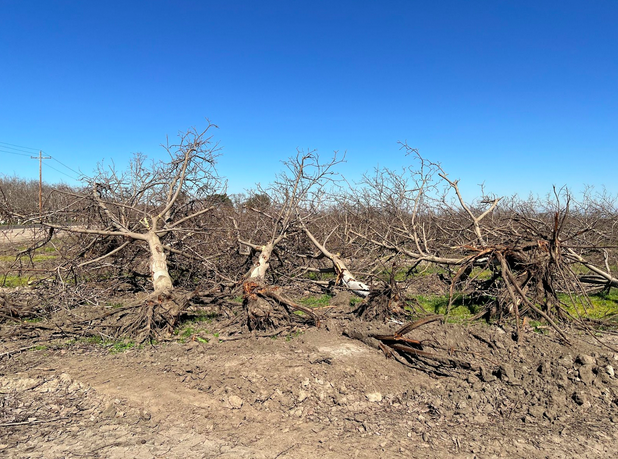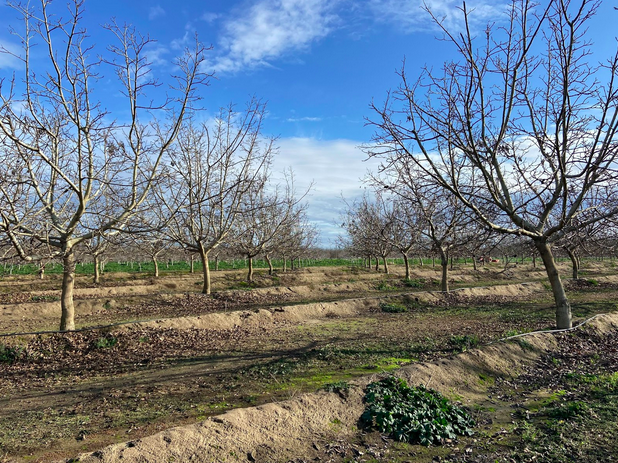
A UC agricultural advisor explains the harvest cycle, soil amendments
By Elizabeth Fichtner, Agricultural Advisor, UCCE Tulare County
As the winter months arrive in the southern San Joaquin Valley, many nut growers are wrapping up their harvests and getting ready for the next growing season. With the end of almond, pistachio, and walnut harvest, the harvest machinery has left the field and the dust has settled—literally.
You might still see one nut crop being gathered. Pecans are the last of the nut crops to be harvested, and their late fall harvest proceeds more slowly than that of other nut crops, namely because they are harvested after the start of the rainy season when wet ground makes it more difficult to drive into orchards. As a result, pecans are often harvested into December, while the other nuts are harvested by the end of October.
During the dormant season, growers are busy preparing orchards and land for the following year. Trees are pruned to remove dead or diseased wood and to improve light interception in the canopy. Less productive orchards may be removed to prepare the ground for replanting with another crop, or to fallow land to reduce groundwater use. Upon pushing over the trees, the remaining wood is either chipped and reincorporated into the orchard floor or burned. Burning is less costly than chipping and is likely to get rid of pests and diseases associated with the wood. The downside of burning is the adverse effect on air quality. Consequently, burning operations are both limited and regulated, and growers must receive permission to burn orchard debris from the Air Pollution Control District. Mixing chipped wood into the soil has its own advantages such as improvement of soil structure and fertility.
You might also see big piles of what looks like chalk dust at the edges of orchards. This is the time of year that most soil amendments are applied to the orchard floor. Inorganic materials, such as sulfur (yellow) and gypsum (white), are often applied during the winter to allow the products to mix with water and enter the soil profile. Because soils in this region are generally calcareous (high pH), sulfur is used to acidify the soil. Gypsum is a source of calcium and is added to improve water penetration, ameliorate salinity, and provide plant nutrition.

Have you noticed piles of compost applied to orchards? You’re seeing organic amendments that are applied to the soil as a source of plant nutrition. Because some forms of inorganic nitrogen are readily leached through the soil and may threaten groundwater quality, growers apply compost as a form of slow-release nitrogen that is less likely to enter groundwater than nitrogen applied in inorganic forms. Incorporation of organic matter to the soil also improves water retention and water penetration.
Growers tend to apply compost soon after harvest to maximize the amount of time the material is in the field before the following year’s harvest. Over time, food safety risks associated with microbes in animal waste decrease and organic matter slowly decomposes to release nutrients for plant growth. The decomposition of compost is achieved by soil microbial activity. The microbes actively metabolize the debris, producing heat and carbon dioxide as they respire. On cold winter mornings, the steam arising from the soil surface is evidence of microbial activity.
Although dormant, nut trees in the southern San Joaquin Valley rely on the cold temperatures to produce a crop the following year. Freezing temperatures, however, particularly in the fall, may cause damage to trees, resulting in dieback. As a community, we can appreciate the cool, foggy mornings of winter knowing that the flower buds are preparing for a bountiful season the following year.

Comments are closed.